The Wild Flowers of Skopelos
Blog
For those who love Skopelos and the wildflowers of Greece
The Wild Flowers of Skopelos
Blog
For those who love Skopelos and the wildflowers of Greece


















Now more than 300 flowers and trees

The Wildflowers of Skopelos is for those who love the island of Skopelos and the wildflowers of Greece.
There are now over 300 flowers and trees and also information on the island, its floral landscape, geology, climate, and ecological habitats.
Apiaceae
Named for the bees
3 Apr 2021
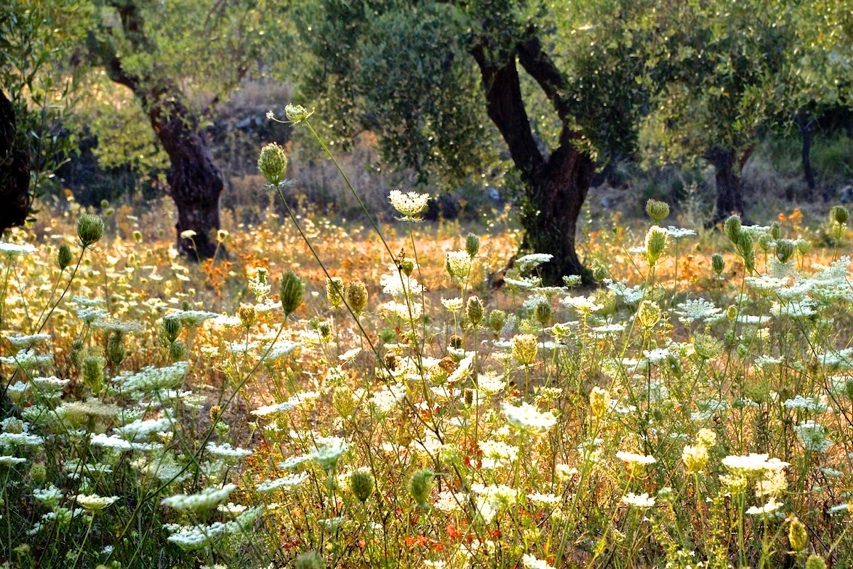
In spring and early summer the olive groves and fields of Skopelos are often filled with white lacy flowers of Apiaceae family, commonly known as the carrot, parsley or celery family.
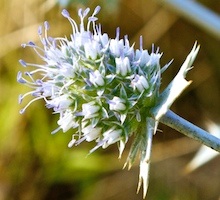
The flowers of the family are usually, though not always arranged in umbels, which as the alternative name of the family, Umbelliferae suggests the flowers resemble umbrellas with rays radiating from a central point at the top of the stem, though some have globular heads, like the Eryngium species, the intriguing sea holly ( Eringium maritimum) and the thistle like weed, field eryngium (Eringium campestre).
Many of the plants of this family contains useful culinary plants with aromatics: parsley, coriander & dill; vegetables: carrots, celery & parsnips. The tender leaves of Apiaceae are collected in springtime to add flavour to salads and horta, but care must be taken. Poisonous plants including hemlock (Conium maculatum) appear very similar to other members of the family; It can be identified by the characteristic reddish or purple splodges on their stems and it produces an unpleasant odour when the leaves are crushed. Drinking a potion of hemlock was the mode of demise chosen by Socrates when he was sentenced to death for denying the existence of the gods and corrupting the youth of Athens.
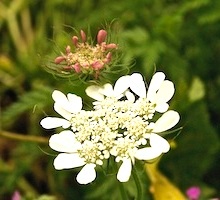
Of the more popular forms of wild herb collected on Skopelos are rock samphire or kritima (Crithmum maritimum),found on the rocky shoreline and steep sea cliffs and the fragrant, feathery leaves of fennel (Foeniculum vulgare) ; Hartwort or kafkalida (Tordilium apulum); all are Apiaceae.
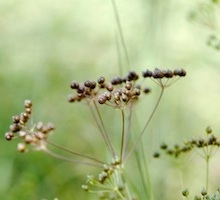
The white Apiaceae are easily recognisable as members of the family but not easily distinguished from each other, especially in flower but can be differentiated by their fruits. Some of the fruits are spiny and stick easily to the coats of passing animals or onto clothing, giving them the common name of sock destroyers. Some of the plants retain their seeds until winter and the skeletons of the flowers can be seen outlined against the light.
Nine new flower pages have been added to the website,
all are white Apiaceae.









Click on image to open flower page.
*The Colours of Skopelos
30 Jan 2021
*The title of this blog has been borrowed from the ceramic workshop of the same name where Elizabeth McGhie makes beautiful pottery reflecting The Colours of Skopelos..
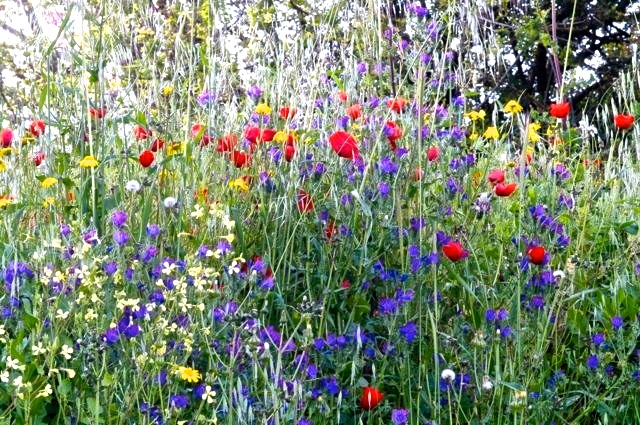
With its extensive pine forest, the dominant colour of Skopelos is of course green and it is often referred to as the Green on Blue Island. In springtime, however, the island is scattered with flowers of many colours, as if Iris, the messenger of the gods and the goddess of the rainbow, had flown over the island and sprinkled it with drops coloured rain.
The main function of coloured flower petals is to attract pollinating insects; the petals act as banners, their colours ensuring that they stand out against the background of green, brown and grey. Although beautiful to the human eye, the flowers are seen very differently by insects their compound eyes perceive light from the blue-violet and ultra-violet end of the spectrum and some which look dull to us are bright to the insect eye. The coloured petals attract from a distance and markings on the petals, often invisible to humans, lead them to the pollen at the centre of the flower.
The colour of flowers is created by a combination of pigments and structure. The most common pigments are carotenoids and flavonoids. The carotenoids including carotene, produce yellow, orange and red colours of flowers and account for the changing colours of autumn leaves. The flavonoids produce including anthocyanin which creates red, purple and blue. Purple is the favourite colour of honey bees and they visit flowers of this colour more often than any other.
The colour is not however exclusively due to pigments, but also to structure and recent studies have shown that microscopic grooves below the surface of the cells of many flowers, including those which are yellow or red, reflect light producing a blue halo; this attracts the attention of bees. Similar structures can give blue colour to butterfly wings and birds feathers.
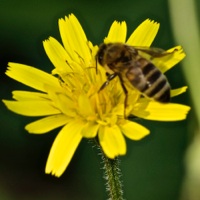
On Skopelos the commonest flower colour is yellow, this includes many of the daisy-dandelion family, (Asteracea), pea flowered shrubs, (Fabaceae) and the buttercup family, (Ranunculaceae). In early summer, the whole island seems to explode with yellow flowers. Next in abundance are white flowers and these occur throughout the seasons, with beautiful white star of Bethlehem (Ornithogalus collinum) in early spring, many species of the carrot family ( Apiaceae) throughout the summer and ladies tresses (Spiranthus spiralis) in autumn.
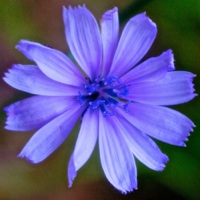
The rarest flower colour is blue, as blue pigment is difficult for plants to produce; chicory (Cichorium intibus) which often flowers following rain in midsummer, is the only wild blue daisy.
Some flowers have more than one colour, scarlet pimpernel (Anagalis arvensis), is usually red but also occurs in deep blue. The marvel of Peru (Mirabilis jalapa) occurs as magenta, yellow or white; sometimes two colours appearing together on the same plant or even on the same flower.
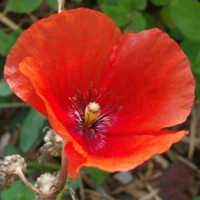
There are few plant species with red flowers, but as anyone visiting Skopelos in late spring or early summer can observe there are many red poppies (Papaveraceae). The impressive brilliance of the poppy results from the very heavy concentration of red pigment in petals which are only 3 cells thick and the complex structure of surface cells which create a brilliant flash of reflected light attracting pollinators from afar.
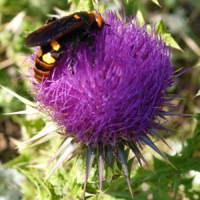
As the the hot dry months begin, purple is the dominant colour with many of the aromatic herds having flowers in the violet and purple and of course many of the summer flowering thistles have brilliant purple flower heads, which are often visited by beetles. or hoverflies.
Most visitors visit Skopelos in the hot summer months when Skopelos is dominated by the intense blue of the sea and sky, but to appreciate the true range of the colours of Skopelos, you must visit in spring, autumn and winter as well.
Chart reflecting the number of species of the wildflowers of Skopelos by colour
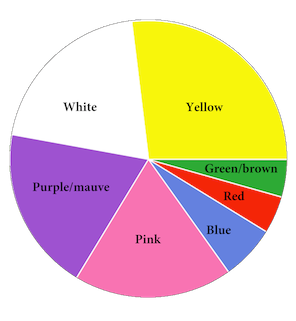
Plants in the website are arranged mainly by colour.
Click on a colour & follow the links














For older posts click here....























